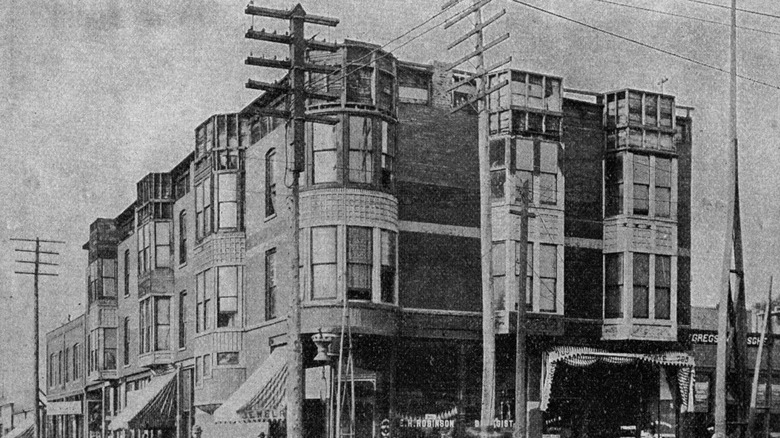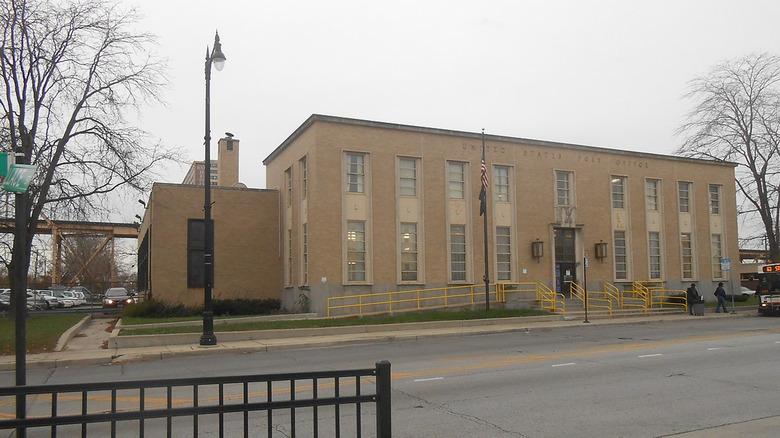Whatever Happened To H.H. Holmes' Murder Castle?
H.H. Holmes has gone down in history with the dark distinction of being one of the United States' first serial killers. Originally born in Gilmanton, New Hampshire, he completed medical school at the University of Michigan and then moved to Chicago, where he would commit most of his most grisly crimes, according to Biography. While working at a pharmacy, Holmes used the 1893 Chicago's World's Fair as the perfect cover to construct an elaborate, three-story house, which was dubbed the World's Fair Hotel. However, this was no ordinary hotel.
Inside, an elaborate maze of confusing hallways, trapdoors, secret passages, and stairways to nowhere hid Holmes' horrific deeds. When young people sought a room at the hotel, he would lure them into the disorienting labyrinth, eventually trapping them in his basement, where he tortured and murdered his victims. Although he confessed to 27 murders, some historians believe that number may be even higher (via Biography). Holmes was finally caught and put to death in 1896 for his crimes. But what happened to the infamous murder castle where he took so many lives?
Holmes' murder castle is now the site of a Post Office
The fate of H.H. Holmes' creepy murder castle wasn't much better than the fate of the man himself. One night in 1895, while Holmes was in prison, the deadly hotel burned down, possibly set on fire by two unidentified men who were seen entering the building late that evening, according to History. However, the structure itself remained standing for another 40 years.
The remnants of the building were finally torn down in 1938, but not before at least one Chicago Tribune reporter wrote an article describing the unsettling place. "O, what a queer house it was! In all America there was none other like it. Its chimneys stuck out where chimneys should never stick out. Its stairways ended nowhere in particular. Winding passages brought the uninitiated with a frightful jerk back to where they had started from. There were rooms that had no doors. There were doors that had no rooms. A mysterious house it was indeed — a crooked house, a reflex of the builder's own distorted mind. In that house occurred dark and eerie deeds," read the report, which was published in 1937 (via Biography). Now, in the very spot where these eerie deeds were committed, sits an ordinary U.S. Postal Service building.

